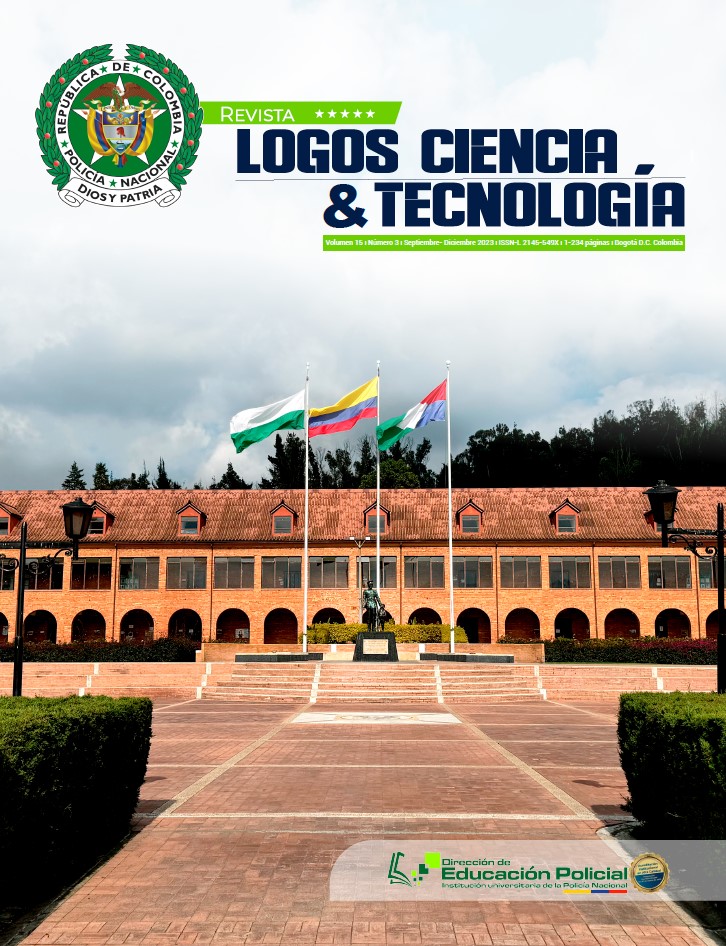Implementation of a roadmap to ensure information in the development of online applications
DOI:
https://doi.org/10.22335/rlct.v16i3.1967Keywords:
COBIT, online systems, roadmap, securing information, security managementAbstract
This article presents a roadmap for the control of information and data in the areas of software application development for large, medium, and small online application development companies, which are vulnerable due to the lack of controls or policies that allow the protection of information from unwanted attacks and the exposure of sensitive information. A research methodology was implemented based on the International Organisation for Standardisation ISO 27001, the characteristics of Control Objectives for Information and Related Technologies COBIT and the Magerit methodology for the design of a Computer Security Management System (ISMS), which protects customer information in online application developments. With the presentation of the development methodology, control and experimental data have been used to secure information, managing to raise the level of security and maturity of the company, thereby seeking to guarantee the three pillars of information security: integrity, availability, and confidentiality.
Downloads
References
Alemán-Novoa, C. I. (2015). Metodología para la implementación de un SGSI en la fundación universitaria Juan de Castellanos, bajo la norma ISO 27001:2005. [Tesis de maestría, Universidad Internacional de La Rioja]. Repositorio Digital reunir.
Andrés, A., & Gómez, L. (2012). Guía de aplicación de la Norma UNE-ISO/IEC 27001 sobre seguridad en sistemas de información para pymes. https://varios.cen7dias.es/documentos/documentos/90/iso.pdf
Bautista Torres, L. A. (2012). Plan de seguridad de la información compañía XYZ soluciones. [Tesis de maestría, Universitat Autònoma de Barcelona]. https://openaccess.uoc.edu/bitstream/10609/19443/2/TFM_ENT05_AlejandroBautista.pdf
Botero Vega, D. H. (2016). Diseño del Sistema de Gestión de Seguridad Informática y de la Información (SGSI) para la empresa Belisario Ltda. de la ciudad de Bogotá, D. C. [Proyecto de grado, Universidad Nacional Abierta y a Distancia (UNAD), Escuela de Ciencias Básicas Tecnología e Ingeniería]. https://repository.unad.edu.co/bitstream/10596/12925/1/80259558.pdf
COBIT. (1996). COBIT Marco referencial (3a ed.). Emitido por el Comité Directivo de COBIT y el IT Governance Institute (pp. 1-72). http://files.uladech.edu.pe/docente/02659781/CAT/S07/02_03MarcoReferencial.pdf
ESGinnova Group (2015, marzo 30). ISO 27001: los activos de información. https://www.pmg-ssi.com/2015/03/iso-27001-los-activos-deinformacion/
Fisher, R. (1988). Seguridad en los sistemas informáticos. Ediciones Díaz de Santos. García, R. (2013). La información es el activo más importante para las empresas actualmente. https://logistica.cdecomunicacion.es/noticias/sectoriales/7029/la-informacion-esel-activo-mas-importante-para-la-empresas
Giudice, O. F., Fauquex, J., Scotti, S., & Yelen, M. (2011). Protección de los datos personales de la historia clínica en Argentina y Uruguay e IHE XDS. Journal of Health Informatics, 3. https://jhi.sbis.org.br/index.php/jhi-sbis/ article/view/166
Gómez Fernández, L., & Fernández Rivero, P. P. (2018). Cómo implantar un SGSI según UNE-EN ISO/IEC 27001 y su aplicación en el Esquema Nacional de Seguridad. Editorial Aenor Conocimiento, S.L.U.
Hiscox (2023). Informe de Ciberpreparación de Hiscox. https://www.hiscox.es/sites/spain/files/2023-10/22594%20-20Cyber%20Readiness%20Report%202023%20-%20Spanish.pdf
Hussain, S., Anwaar, H., Sultan, K., Mahmud, U., Farooqui, S., Karamat, T., & Toure, I. K. (2024). Mitigating software vulnerabilities through secure software development with a policy-driven waterfall model. Journal of Engineering, 2024, 1-15. Article ID 9962691- https://doi.org/10.1155/2024/9962691
Ingeniería de Calidad (4 de octubre, 2024) Ciclo de Deming: Metodología de mejora continua | PDCA - PHVA. https://www.ingenieriadecalidad.com/2020/02/ciclo-de-deming.html
Kaspersky (2023, 23 de agosto). Nueva epidemia: el phishing se sextuplicó en América Latina con el reinicio de la actividad económica y el apoyo de la IA. Kaspersky daily https://latam.kaspersky.com/blog/panorama-amenazas-latam-2023/26586/
Kerr, C., & Phaal, R. (2022). Roadmapping and roadmaps: Definition and underpinning concepts. IEEE Transactions on Engineering Management. https://doi.org/10.1109/ TEM.2021.3096012
Ley 1581 de 2012. “Por la cual se dictan disposiciones generales para la protección de datos personales”. https://www.funcionpublica.gov.co/eva/gestornormativo/ norma.php?i=49981
Ministerio de Hacienda y Administraciones Públicas (2012). Magerit - versión 3.0: Metodología de análisis y gestión de riesgos de los sistemas de información. Libro I: Método. Editorial del Ministerio de Hacienda y Administraciones Públicas
MINTIC. (2016). Guía para la Gestión y Clasificación de Activos de Información. https://gobiernodigital.mintic.gov.co/692/ articles-150528_G5_Gestion_Clasificacion. pdf Mujica, M., & Álvarez, Y. (2009). El análisis de riesgo en la seguridad de la información. Publicaciones en Ciencias y Tecnología, 4(2), 33-37. https://revistas.uclave.org/index.php/pcyt/article/view/1086
Muñoz Periñán, I. L., & Ulloa Villegas, G. (2011). Gobierno de TI – Estado del arte. Sistemas & Telemática, 9(17), 23-53. https://www.redalyc.org/articulo.oa?id=411534384003
Pinzón Parada, I. (2014). Gestión del riesgo en seguridad informática. Universidad Piloto de Colombia. http://repository.unipiloto.edu.co/handle/20.500.12277/2840
Trías, M., González, P., Fajardo, S., & Flores, L. (2019). Las 5 W + H y el ciclo de mejora en la gestión de procesos. LATU (Laboratorio Tecnológico del Uruguay). https://ojs.latu.org.uy/index.php/INNOTEC-Gestion/article/view/5/4
Downloads
Published
Issue
Section
Categories
License
Copyright (c) 2024 Revista Logos Ciencia & Tecnología

This work is licensed under a Creative Commons Attribution-NonCommercial-NoDerivatives 4.0 International License.
This journal provides free and immediate access to its content (https://creativecommons.org/licenses/by/4.0/legalcode#languages), under the principle that making research available to the public free of charge supports greater global knowledge exchange. This means that the authors transfer the Copyrights to the journal, so that the material can be copied and distributed by any means, as long as the authors’ recognition is maintained, and the articles are not commercially used or modified in any way.
































